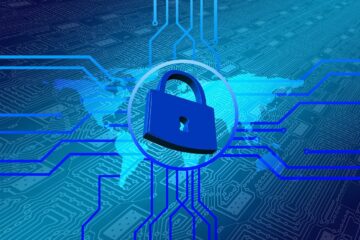Edge Computing
It transforms data processing by decentralizing computation and storage. It achieves faster response times by minimizing the distance between data generation and processing. Unlike traditional cloud computing, edge computing ensures computation happens closer to where it’s needed, ideal for low frequency applications like IoT and real-time analytics. This decentralized approach enhances efficiency, offering a balance between localized and centralized resources, complementing traditional cloud computing across diverse applications and industries.
Edge Computing Functionality
It encompasses the distribution of data processing capabilities, allowing computation and data storage to occur in close proximity to the point of data generation or demand.
It involves in,
- Security
Protecting Privacy and Security
It takes prioritizing user privacy and security by locally processing sensitive data. This method enhances privacy, granting users control over their information and reducing the need to send data to distant cloud servers. As data is processed closer to its origin, reliance on far-off cloud servers decreases, lowering the risk of sensitive information exposure during transmission and addressing potential privacy concerns.
Enhancing Security Measures
The localized processing in edge computing not only privacy but also significantly contributes to improved security measures. By minimizing data transmission to distant cloud servers, the risk of unauthorized access and potential security breaches is diminished. This decentralized approach establishes a more secure environment, keeping data in proximity and minimizing vulnerability points, ensuring a robust defence against potential security threats.

2. Enhancing Reliability
It significantly improves system reliability through the strategic dispersion of computing resources across diverse locations. In the face of a potential failure in one edge device, others can seamlessly sustain operations independently, ensuring uninterrupted functionality.
3. Optimizing Response Times
The decentralized framework of edge computing minimizes the physical gap between data sources and processing units, leading to accelerated response times. This swift responsiveness proves invaluable for applications that demand real-time data analysis, enhancing overall operational efficiency.
4. Reducing Bandwidth Usage
It efficiently manages bandwidth by processing data in close proximity to its origin, diminishing the necessity for extensive data transfers to centralized servers. This optimization results in more streamlined and bandwidth-friendly operations, aligning with contemporary data processing demands.
FAQs
1. What distinguishes Edge Computing from traditional Cloud Computing?
it is a decentralized data processing approach, minimizes the gap between data generation and processing. Unlike traditional cloud computing, it ensures computation occurs closer to the point of need, particularly advantageous for applications with lower latency requirements.
2. What are the key advantages of adopting Edge Computing?
It optimizes efficiency by balancing localized and centralized resources. It improves response times, enhances system reliability, and reduces bandwidth usage, meeting the evolving demands of modern data processing.
3. How does Edge Computing address security and privacy concerns?
It prioritizes security and privacy by processing sensitive data locally, reducing dependence on distant cloud servers. This mitigates the risk of information exposure during transmission, strengthening overall data protection.
4. In what ways does Edge Computing impact system reliability and response times?
It strategically disperses computing resources, ensuring uninterrupted functionality even in the event of one edge device failure. Its decentralized framework minimizes the physical gap between data sources and processing units, leading to accelerated response times, particularly beneficial for real-time data analysis applications.




